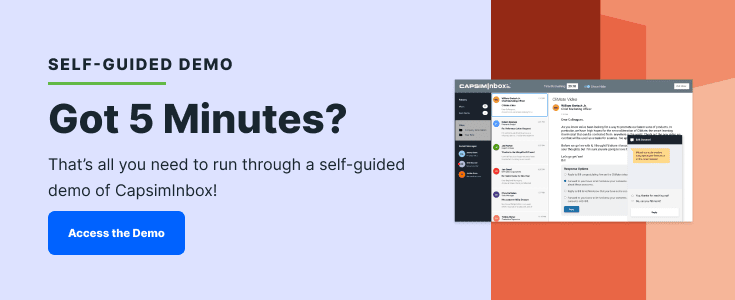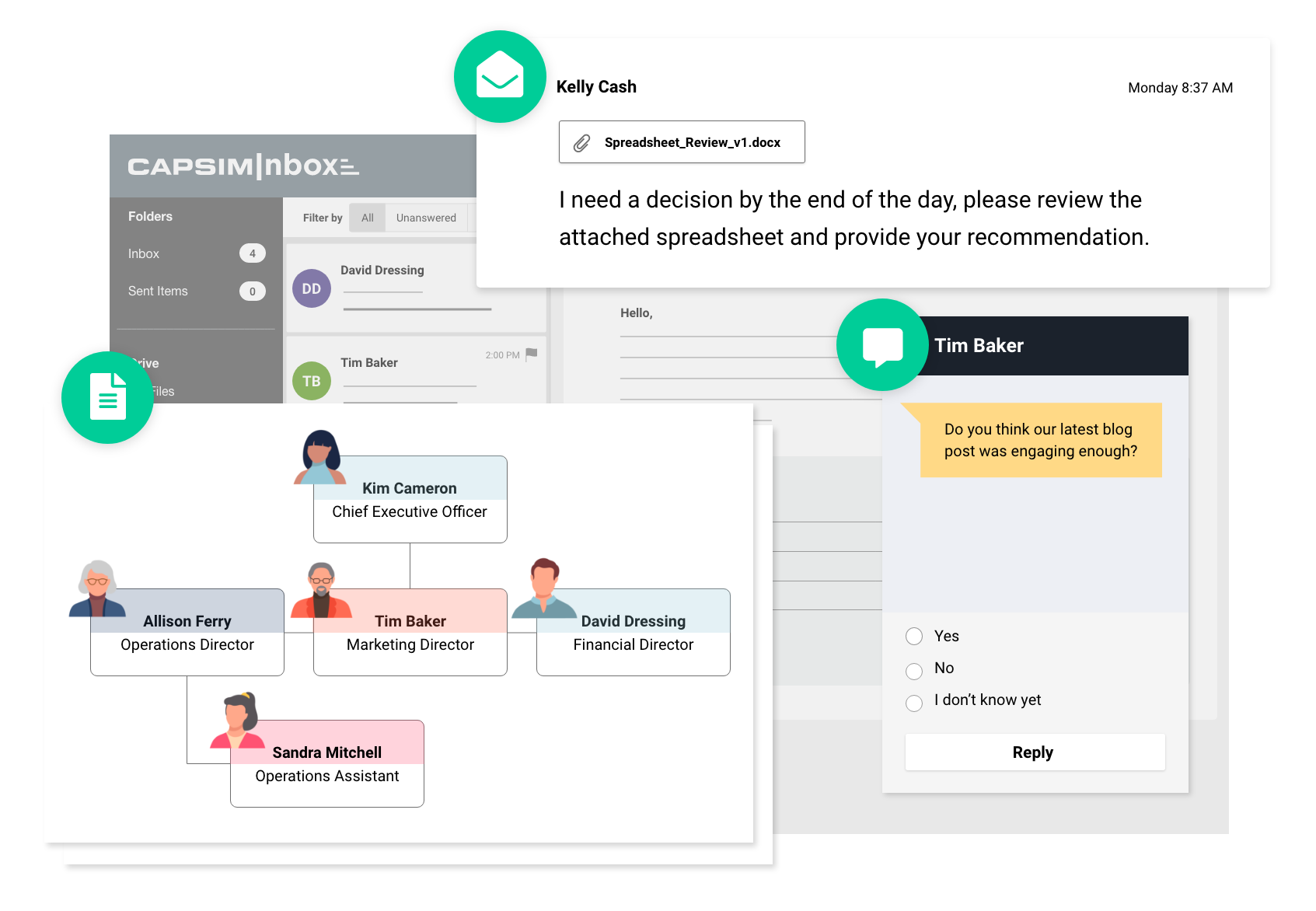What is Microlearning and Why is it a Game-Changer for L&D Programs?
January 3, 2022

Learning takes time, right? After all, there are regulations and rules regarding the number of hours students must sit in the classroom to earn college degrees, and school years must check off a certain number of days on the calendar for youngsters. But is professional and experiential learning the same?
Consider this scenario: You walk into your day at work with a to-do list fifteen miles long, only to discover that today is the day of the professional development retreat. You have to leave your desk for four hours of the day to sit through PowerPoint presentations.
Do you focus on and engage with those PowerPoints, or are you sneaking in your laptop and trying to get some work done under the table?
When it comes to learning and development in the work environment, longer often doesn’t mean better. This post will introduce you to microlearning and show you how you can use it to provide an L&D experience your employees will love.
What is Microlearning?
You’re probably anxious to get to the “game-changing” piece of the puzzle. Still, before showing you how microlearning can level up your learning and development programs, we need to define what microlearning is.
Microlearning refers to a method of training and development that occurs in small, bite-sized chunks rather than long seminars, classes, or professional development retreats. Ideally, a microlearning session is no more than 10 minutes long and covers a single topic with a single learning objective.
We’ve been at the forefront of authoring microsimulations for years, and we’ve learned the ins and outs of microlearning and its potential as a learning and development tool. Let’s take a closer look at how microlearning changes the game for L&D leaders and their teams.
Increased Engagement
Most people who have worked in a professional environment have sat through hour-long professional development PowerPoint presentations. But how many could list a single thing they learned from that presentation, a month, a week, or in some cases even a few days later?
Research indicates that most people only remain engaged with a speaker for eighteen to twenty minutes. After that time, listeners find it difficult to focus on the presentation, an estimate that assumes the best of situations. It can be challenging to keep employees engaged for those first twenty minutes in a modern work environment with pressing deadlines, laptops, and cell phones.
Compare this with a microlearning experience. Not only is a microlearning segment considerably shorter than that hour-long PowerPoint - generally around ten minutes or less - but it is a much more engaging and relevant experience.
Microlearning splits training material into short, interactive chunks. The segments may be gamified, including the trainee as a participant in the material rather than a passive observer.
It’s simple math. In the time it takes for a half-day seminar (four hours), you could put your employees through 20 15-minute microlearning simulations that keep their attention and help them apply the knowledge they’ve gained.
Targeted Learning
Another common complaint of corporate training is, “I’m never going to use this in my job.”
While sometimes these complaints are perceived as simple whining, often, the complainers are correct. After all, are the job duties of all 200 people in a ballroom watching a PowerPoint training so similar that it’s an effective use of time? For most organizations, the answer is “no.”
The bite-sized nature of microlearning allows for more targeted training. Instead of sitting through forty minutes of irrelevant information to get to the piece that matters to their daily work, employees can engage with only the content they need to improve their performance.
The benefits here are two-fold: Not only are employees saving time by only learning relevant content, but they are more likely to participate actively in training that is directly relevant to their job duties. Relevance is key to keeping employees engaged in your L&D efforts. A customizable microlearning solution like CapsimInbox keeps content applicable to employees’ everyday jobs.
Increased Knowledge Retention
We discussed attention spans in the Engagement section above. After twenty minutes or so, most people check out and stop engaging. Even if those people were to bully themselves into paying attention for the full hour, however, they would be less likely to retain the information they heard. Why?
Mental fatigue.
Mental fatigue involves more than just tiredness. When employees are mentally fatigued, they have a hard time paying attention or focusing on whatever task is at hand. As you may expect, people do not retain the information they receive while mentally fatigued. Microlearning has been shown to decrease mental fatigue, making it easier for trainees to retain the information learned in a microlearning session.
Additionally, the bite-sized nature of microlearning makes it easier to continually reintroduce key concepts. Pattern-based, repetitive learning helps the brain move information from short-term memory into long-term memory, ensuring that your trainees will remember the information they learned when it matters most: on the job.
Finally, microlearning platforms like CapsimInbox provide a chance to apply knowledge, a crucial component in knowledge retention. When it comes to learning concepts, “if you don’t use it, you lose it.” Microsimulations provide your employees with an opportunity to directly apply what they learned, and therefore retain more of those concepts.
Reduced L&D Spend
For our last microlearning benefit, we’ll provide you with some information that is sure to get your organization’s leadership on board with this training methodology.
Microlearning will save your organization time and money.
There are three main ways in which microlearning saves the day with regard to L&D spending. First, employees will spend more time on their job duties and less time in retreats and training seminars, increasing productivity while still allowing them to level up their skills.
Second, microlearning is done online through a software-as-a-service product. You no longer need to rent out spaces for work retreats or pay for travel or hotels for off-site employees to attend. You can also save money on speakers and corporate trainers by switching to microlearning.
Finally, microlearning courses are easier than full-length webinars or courses to create and adjust. As technologies, processes, and practices change at your business, your L&D team will be able to easily and quickly update development materials to match the latest information.
Change Your L&D Game with Microlearning
Microlearning helps your company win in terms of training effectiveness, employee satisfaction, and your L&D budget. Targeted training can help you close skill gaps quickly, and the modular nature of microlearning allows you to update outdated pieces of training quickly and easily.
Capsim’s microsimulation solutions provide learners with the opportunity to simulate a full day’s worth of decisions for their specific role in less than thirty minutes. CapsimInbox isn’t just quick. It’s also a proven and effective method of training. Your employees will be able to interact with characters in a gamified environment that mirrors the real world, resulting in an engaging learning experience that helps lessons stick.
To see how CapsimInbox can level up your L&D game, take a self-guided demo of our inbox simulation.





.png?width=80&name=1-questions%20(1).png)